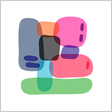What happens when you decouple design from the marketplace, when rather than making technology sexy, easy to use and more consumable, designers use the language of design to pose questions, entertain, and provoke — to transport our imaginations into parallel but possible worlds?
We are concerned not only with the expressive, functional and communicative possibilities of new technologies but also with the social, cultural and ethical consequences of living within an increasingly technologically mediated society.
The project consists of a number of design proposals presented through models, photographic scenarios, videos and 3D texts. It is absolutely not about prediction, but asking what if..., speculating, imagining, and even dreaming, to create and facilitate reflection on the kind of technologically mediated world we wish to live in. Ideally, one that reflects the complex, troubled people we are, rather than the easily satisfied consumers and users we are supposed to be.
Commissioned by Constance Rubini for the the 2010 St Etienne Design Biennale.
Scenario Photos: Jason Evans
Stories: Alex Burrett
Thanks to:
Graeme Findlay
Nick Williamson
David Benque
Nicolas Myers
Bernd Hopfengärtner
Design Interactions / RCA
Design Indaba
2D-3D
Berry Place
Students from BA PFA Newport University
We are concerned not only with the expressive, functional and communicative possibilities of new technologies but also with the social, cultural and ethical consequences of living within an increasingly technologically mediated society.
The project consists of a number of design proposals presented through models, photographic scenarios, videos and 3D texts. It is absolutely not about prediction, but asking what if..., speculating, imagining, and even dreaming, to create and facilitate reflection on the kind of technologically mediated world we wish to live in. Ideally, one that reflects the complex, troubled people we are, rather than the easily satisfied consumers and users we are supposed to be.
- Foragers: The world is running out of food – we need to produce 70% more food in
the next 40 years according to the UN. Yet we continue to over-populate
the planet, use up resources and ignore all the warning signs. It is
completely unsustainable. In this scenario, a group of people take their fate into their own hands and
start building DIY devices. They use synthetic biology to create
“microbial stomach bacteria”, along with electronic and mechanical
devices, to maximise the nutritional value of the urban environment,
making-up for any shortcomings in the commercially available but
increasingly limited diet. These people are the new urban foragers.
- Stop and Scan:In this scenario the mind becomes a new site of interest for the state, requiring new protocols of ownership, access, protection and transparency. Police carry out random stop and search scans near crime scenes. Using a special scanner, people are shown images that only the criminal could know about. The device is based on brain fingerprinting technology where a scanner detects a characteristic electrical brainwave response whenever a person responds to a known stimulus. If the person being scanned appears to recognise an image, a light glows and they are taken away for further processing.
- EM Listeners: Echelon is brought to the street. Em-listeners move through public spaces, they scan telephone calls, emails and anything else sent over the spectrum. Their highly visible antennae are intended to deter any subversive activities. Their presence is accepted because it means less risk from terrorists.
- Afterlife: This device is intended for a time when euthanasia is far more common than it is today. Medical technologies may have extended life spans but they have not increased quality of life. It’s not too difficult to imagine a time when people opt to take their own lives at the appropriate moment. All sorts of variations on suicide machines may evolve to cater for a huge range of emotional, psychological and metaphysical circumstances. Who would have thought that doctors would eventually work with technologists to develop new and humane ways of dying?
Commissioned by Constance Rubini for the the 2010 St Etienne Design Biennale.
Scenario Photos: Jason Evans
Stories: Alex Burrett
Thanks to:
Graeme Findlay
Nick Williamson
David Benque
Nicolas Myers
Bernd Hopfengärtner
Design Interactions / RCA
Design Indaba
2D-3D
Berry Place
Students from BA PFA Newport University




































